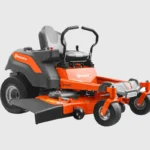Whether you’re a seasoned gardener, a DIY enthusiast, or just someone looking to move heavy loads with ease, picking the right wheelbarrow can make a world of difference. Let’s dig into what makes a good wheelbarrow and how you can choose the best one for your needs.
1. Identifying Your Wheelbarrow Needs
Before you start shopping, it’s essential to understand what you’ll use your wheelbarrow for. Here’s a breakdown:
- Gardening: For light gardening tasks, a smaller, lightweight wheelbarrow will do the trick. You want something easy to maneuver and store.
- Construction: If you’re moving heavy loads like soil, gravel, or bricks, opt for a robust, heavy-duty wheelbarrow.
- DIY Projects: For those weekend projects, a versatile wheelbarrow that balances durability with ease of use is ideal.
2. Types of Wheelbarrows

Wheelbarrows come in various types, each suited for different tasks:
- Single-Wheel Wheelbarrows: These are the traditional style, great for tight spaces and easy turning. However, they can be a bit tippy when loaded heavily.
- Two-Wheel Wheelbarrows: These offer better stability, especially on uneven ground. They’re perfect for heavier loads.
- Four-Wheel Wheelbarrows and Garden Carts: If you need maximum stability and are transporting very heavy or bulky loads, these are your best bet.
3. Key Features to Consider
When shopping for a wheelbarrow, keep these features in mind:
- Load Tub Material:
- Plastic (Polyethylene): Lightweight and resistant to rust but can crack under heavy loads.
- Metal (Steel): Extremely durable and can handle heavy-duty tasks. However, it can rust if not stored properly.
- Fabric: Typically used in foldable wheelbarrows, great for light-duty tasks and easy storage.
| Material | Pros | Cons |
|---|---|---|
| Plastic | Lightweight, rust-resistant | Can crack under heavy loads |
| Metal | Durable, handles heavy tasks | Can rust, heavier |
| Fabric | Easy to store, light-duty | Not for heavy loads |
- Weight Capacity: Make sure to choose a wheelbarrow that can handle the weight of your typical loads. Overloading can lead to breakage.
- Cargo Volume: Volume is just as important as weight capacity. You need to be able to fit your materials comfortably. Most wheelbarrows average around 10 cubic feet.
4. Wheel and Tire Options
Wheels and tires play a crucial role in the functionality of a wheelbarrow:
Number of Wheels:
- Single-Wheel: Best for navigating tight spaces and easy turning, but less stable.
- Two-Wheels: Offers more stability, good for heavier loads.
- Four-Wheels: Maximum stability, great for very heavy loads.
- Tire Types:
- Pneumatic Tires: Filled with air, they provide a smooth ride but can be punctured.
- Non-Pneumatic Tires: Solid rubber, can’t be punctured but don’t provide as smooth a ride.
| Tire Type | Pros | Cons |
|---|---|---|
| Pneumatic | Smooth ride | Can puncture |
| Non-Pneumatic | No punctures | Less smooth ride |
- Ball Bearings: High-quality ball bearings ensure smoother operation and better weight handling.
5. Handle Types and Ergonomics
Handles are often overlooked but are vital for comfort and control:
- Straight Handles: Offer the most maneuverability, perfect for tilting and dumping.
- Closed Handles: Ergonomically superior, making pulling easier and reducing strain.
Ergonomic features like padded grips can make a big difference during long periods of use. Always try to find handles that are comfortable to hold and reduce the strain on your hands and arms.
6. Special Features
Modern wheelbarrows come with various additional features that can make your work easier:
- Electric Wheelbarrows: These high-tech options are excellent for heavy-duty tasks but can be expensive.
- Foldable Wheelbarrows: Perfect for those with limited storage space. They’re usually lighter and best for light-duty tasks.
- Hybrid Wheelbarrows: Versatile options like the WORX Aerocart that can function as a dolly, bag holder, and more.
7. Price Range and Budget Considerations
Wheelbarrows come in a wide range of prices, so it’s important to choose one that fits your budget:
- Budget-Friendly Options: Look for affordable yet reliable models for light to medium tasks.
- High-End Models: These often come with advanced features and are built for heavy-duty use.
8. Maintenance and Longevity
To get the most out of your wheelbarrow, regular maintenance is key:
- Regular Maintenance Tips: Keep the wheelbarrow clean and store it in a dry place to prevent rust and deterioration.
- Common Issues and Solutions: Address common problems like rust on metal wheelbarrows, punctured pneumatic tires, and handle wear promptly to extend the lifespan of your wheelbarrow.
9. Top Wheelbarrow Recommendations
Based on our research and testing, here are some top wheelbarrow recommendations:
| Model | Best For | Key Features |
|---|---|---|
| Garden Star Yard Rover | Best Overall | Lightweight, two-wheel design, easy to maneuver |
| True Temper Steel Wheelbarrow | Best One-Wheel | Sturdy construction, easy to dump |
| Gorilla Carts Poly Yard Cart | Most Portable | Low center of gravity, impact-resistant poly bed |
| WORX Aerocart 8-in-1 | Most Versatile | Multi-functional, foldable extension arms |

Matthew Dowell
Matthew, a seasoned builder from a family of craftsmen, leads Tools Trove. His passion for tools and decades of hands-on experience fuel his commitment to providing expert reviews and insightful content. Whether you’re a pro or a DIY enthusiast, Matthew’s guidance ensures informed decisions in the world of tools.




